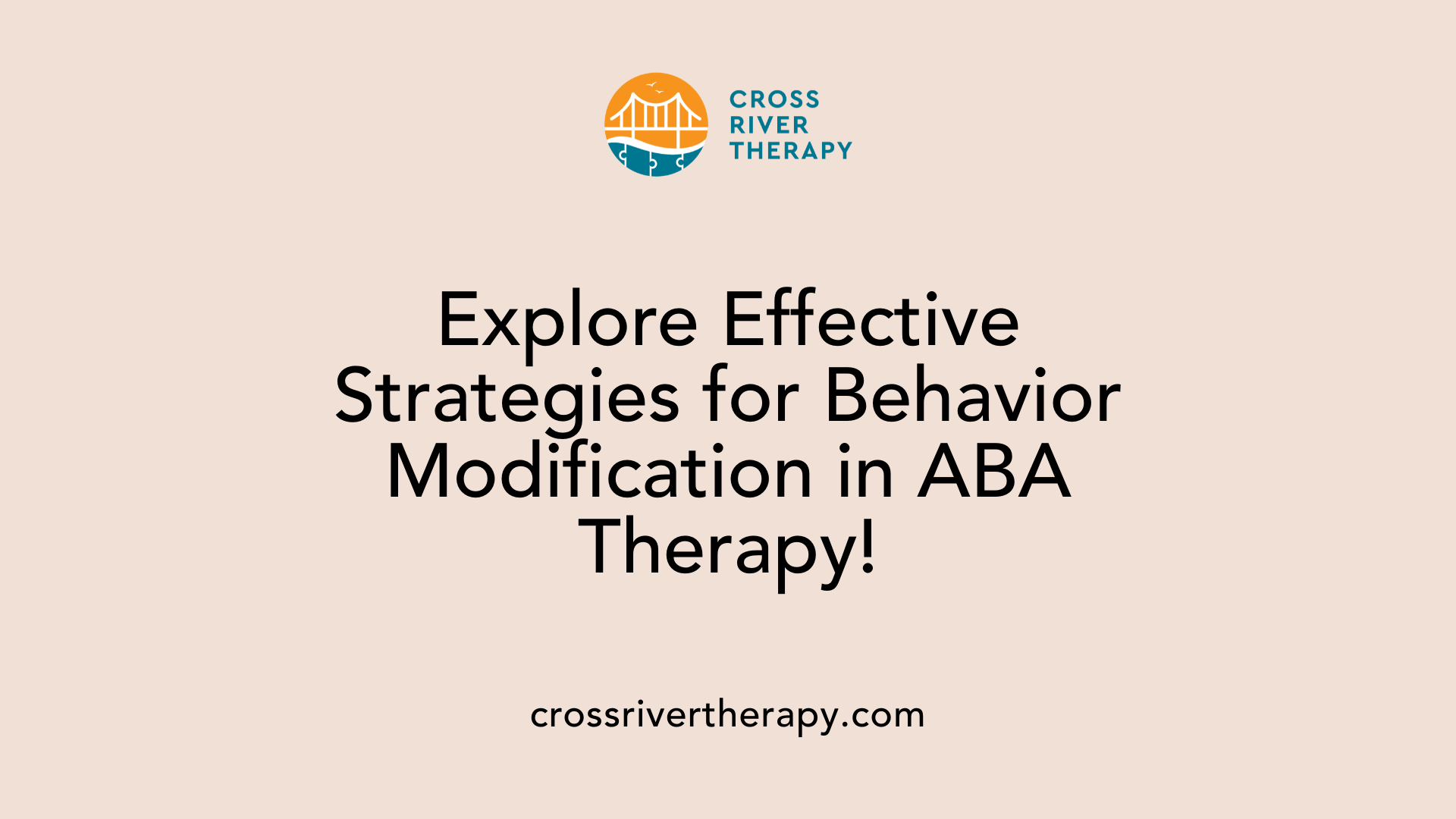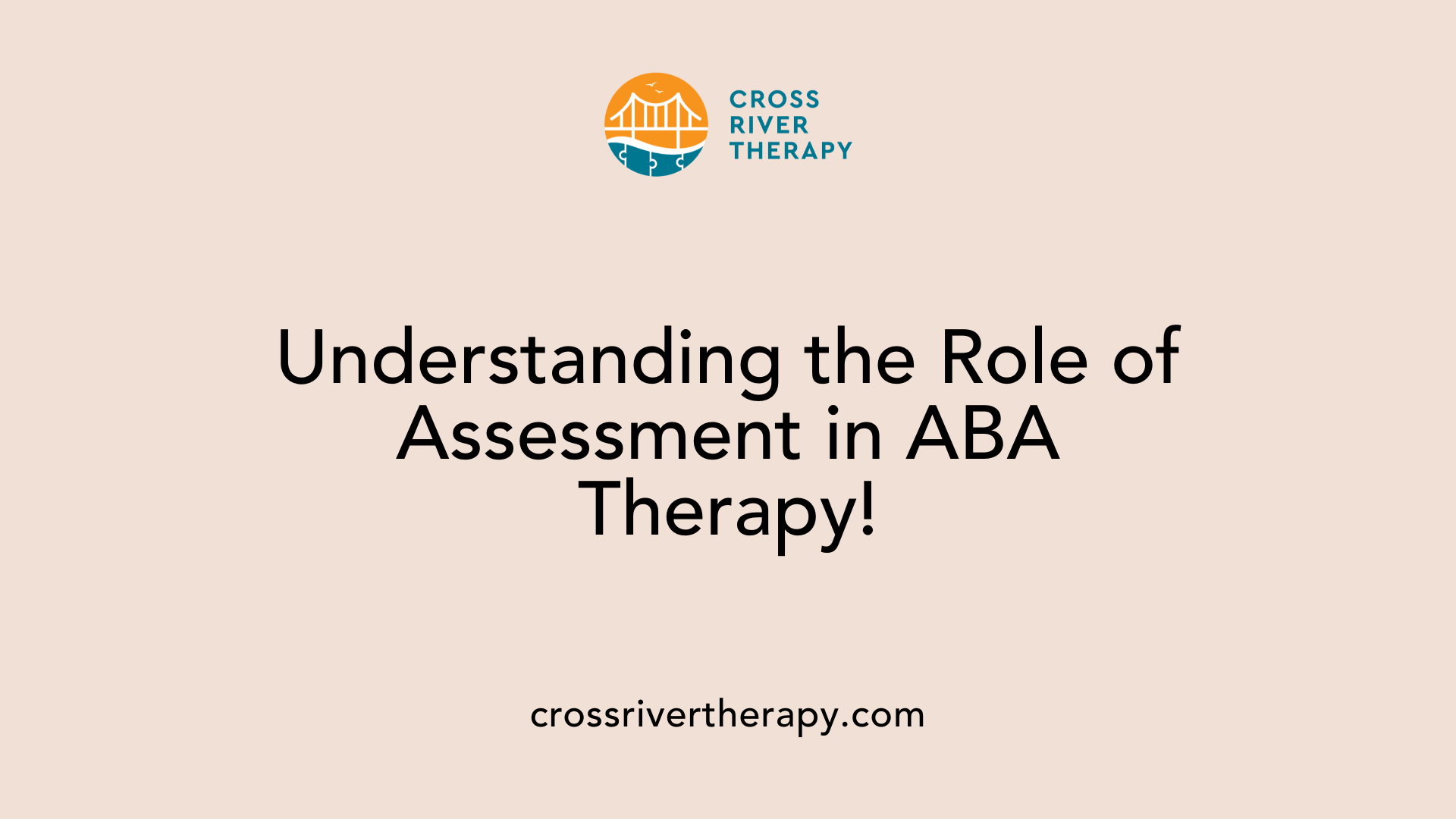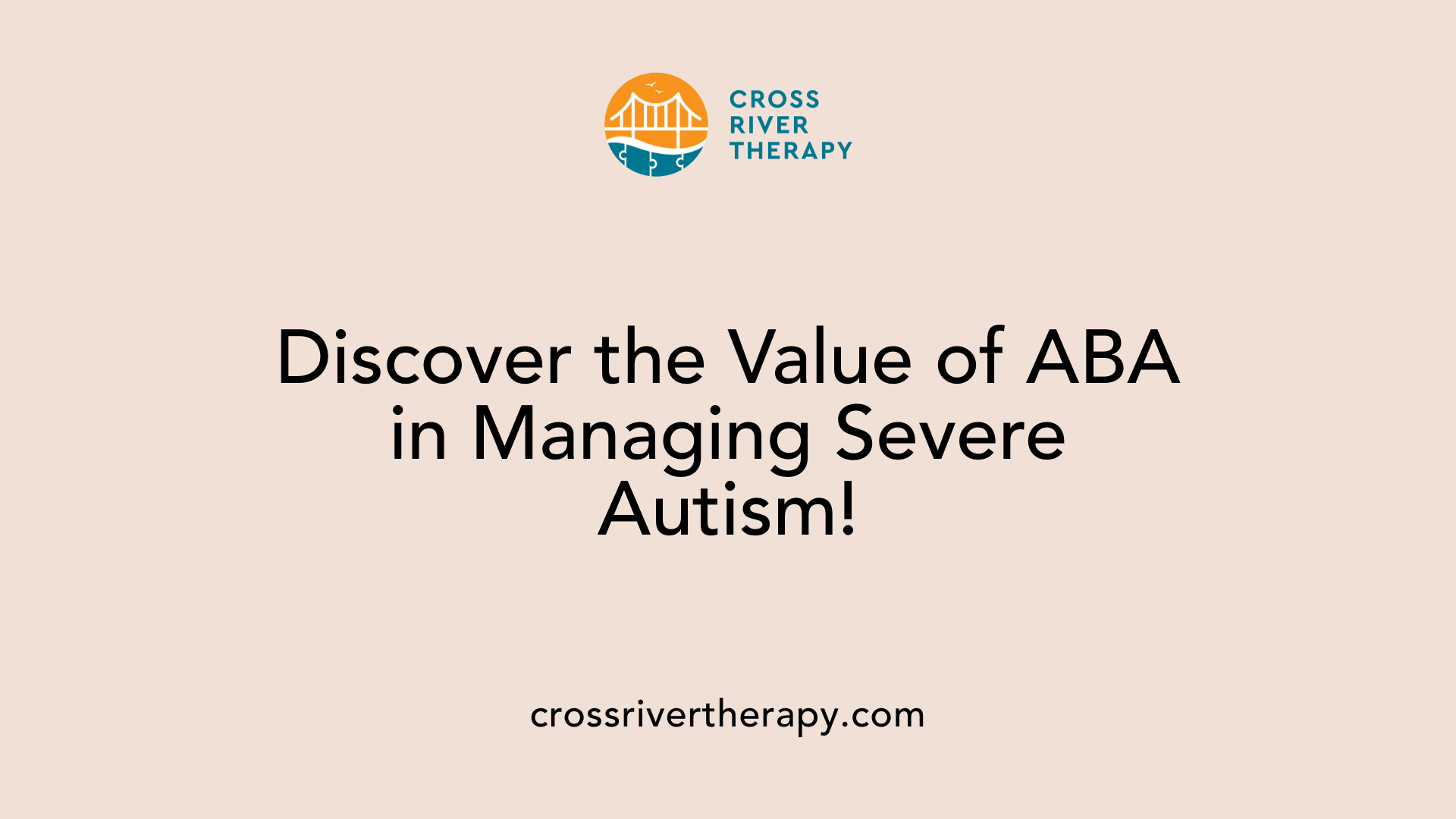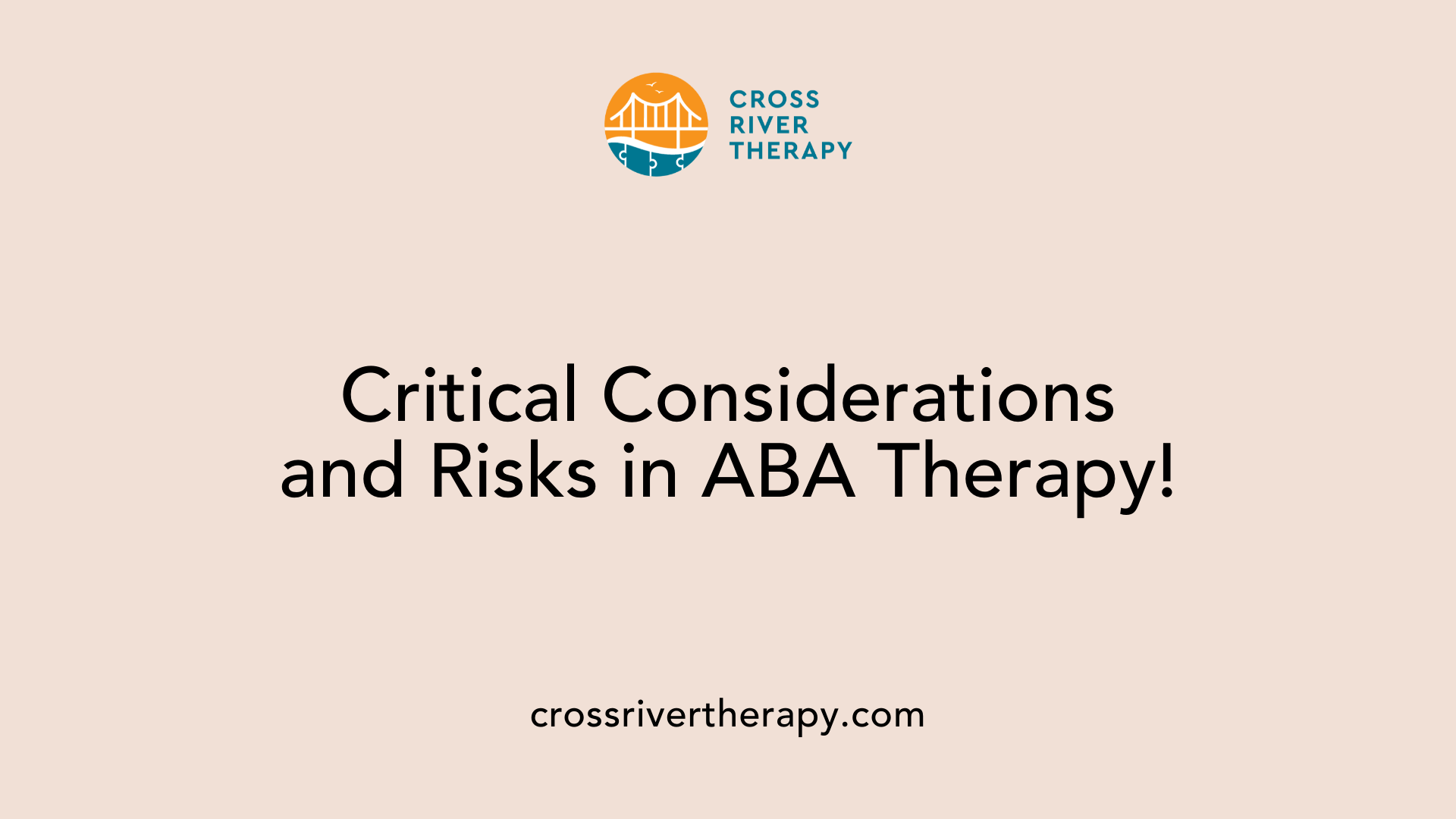ABA Therapy for Children with Severe Autism: Approaches and Strategies
Unveiling the Science of ABA for Severe Autism
Understanding ABA Therapy for Severe Autism
Applied Behavior Analysis (ABA) therapy has emerged as a leading intervention for managing severe autism, known for its ability to build essential skills while reducing challenging behaviors. This scientific approach relies on principles of behaviorism to enhance communication, social interaction, and various life skills, offering personalized strategies tailored to each child's unique needs.
Key Facts on Strategies for Behavior Modification in ABA Therapy
- ABA therapy effectively manages severe behaviors in children with autism.
- A Functional Behavior Assessment (FBA) identifies triggers and motivations for behaviors.
- Positive Reinforcement is used to encourage desired behaviors and reduce harmful actions.
- Individualized treatment plans are tailored to each child's specific behavioral challenges.
- Collaboration with families is essential for consistent behavior modification strategies.
- Data-driven approaches allow continual evaluation and adjustment of interventions.
- Early intervention is critical for effective outcomes in children's cognitive and social development.
- Programs typically involve 20 to 40 hours per week of therapy for significant benefits.
- Emphasis on skill building focuses on improving independence and quality of life.
- Modern ABA practices prioritize emotional well-being alongside behavioral change.
1. Strategies for Behavior Modification

Function of ABA in Severe Autism Management
Applied Behavior Analysis (ABA) is particularly effective in managing severe behaviors in children with autism. By applying evidence-based strategies, ABA aims to improve the quality of life through better communication skills, social interaction, and emotional management. ABA practitioners conduct a Functional Behavior Assessment (FBA) to understand the environmental context of concerning behaviors, laying a foundation for tailored intervention strategies.
The approach in ABA specifically targets behaviors such as aggression, self-injury, and elopement by identifying their triggers. This structured assessment not only helps in pinpointing the exact behaviors needing modification but also highlights potential motivations for these behaviors, ensuring interventions are relevant and effective.
Behavioral Intervention Techniques in ABA
Several key techniques underpin the efficacy of ABA when addressing severe behaviors. Here are some strategies that practitioners frequently employ:
- Positive Reinforcement: Encourages the repetition of desired behaviors through rewards, thereby decreasing reliance on harmful behaviors as the child learns to express their needs more appropriately.
- De-escalation Strategies: Instructing caregivers on strategies to manage potential outbursts by recognizing early signs of distress, promoting safety and emotional support.
- Functional Communication Training: Teaches children to use language or alternative communication methods to express their desires, directly reducing instances of aggression that stem from frustration.
- Discrete Trial Training (DTT): Breaks down skills into small, manageable parts, allowing for focused practice and easier skill acquisition in a structured way.
- Natural Environment Teaching (NET): Incorporates learning experiences into everyday environments to foster generalization of skills learned during therapy.
Individualized Strategies for Severe Autism
Individualization is at the core of effective ABA interventions. Each child's therapy plan is tailored around their unique needs and specific behavioral challenges. Here’s how that personalization is implemented:
- Assessment-Based Programming: A detailed assessment leads to an operational definition of target behaviors and customized behavior intervention plans (BIPs) focused on specific challenges for each child.
- Collaborative Treatment Teams: Involving parents, educators, and therapists in the child's development plans ensures a holistic approach. This collaborative effort interprets behaviors through various lenses, enhancing understanding and intervention applicability.
- Emphasis on Skill Building: Lessons prioritize developing essential life skills, such as communication, social interaction, and self-regulation, directed toward fostering long-term independence.
- Data-Driven Adjustments: Systematic data collection allows continuous evaluation of the effectiveness of implemented strategies. Regular data reviews help BCBAs adjust and refine interventions when necessary.
Addressing Physical Aggression
How can ABA interventions address physical aggression in children with autism?
ABA interventions can effectively address physical aggression in children with autism by employing structured behavioral techniques tailored to the individual’s needs. Here are key points of focus:
- Trigger Identification: Agitation or aggression often arises from overstimulation or unmet communication needs; understanding these triggers is vital.
- Proactive Management Strategies: Developing strategies to manage identified triggers helps prevent aggression proactively rather than reactively.
- Skill Development in Emotional Regulation: Training sessions can focus on teaching emotional management techniques, fostering better coping mechanisms, and decreasing impulsive violent reactions.
- Collaboration Across Environments: Involving caregivers and educators in therapy creates a more supportive atmosphere for behavior modification, ensuring skills learned in one context generalize to others.
Research supports the significance of such approaches, indicating that with consistent and informed ABA strategies, children experience marked reductions in aggressive incidents over time.
In conclusion, through a combination of assessment, individualized treatment plans, and family involvement, ABA therapy provides effective strategies for managing severe behaviors among children with autism.
2. Role of Assessment and Training Techniques

Importance of Functional Behavior Assessment (FBA)
Functional Behavior Assessment (FBA) plays a critical role in ABA therapy, serving as a cornerstone for developing an effective intervention plan. The FBA process involves systematically observing a child's behavior to identify its antecedents (triggers) and consequences. This leads to a deeper understanding of the underlying motivations for the behaviors observed. By identifying these factors, therapists can tailor strategies that address the specific needs of the child, enabling more effective behavior modification.
Application of Discrete Trial Training (DTT)
Discrete Trial Training (DTT) is another fundamental technique within ABA therapy. DTT breaks down complex skills into smaller, more manageable components, teaching them in a structured manner. The process consists of repeated trials where a skill is taught, followed by a prompt or cue to elicit the desired response. Positive reinforcement is utilized after successful responses to encourage repetition of the behavior. Through focused practice, DTT significantly enhances children's learning by promoting engagement and ensuring that skills are mastered before moving on to more complex tasks.
Assessment Techniques in ABA Therapy
Assessment techniques, such as the FBA and DTT, extend beyond just behavior tracking; they include various methodologies designed to understand individual learning styles and capacities better. For instance, therapists frequently employ visual supports, data collection, and progress monitoring to personalize their approaches. This data-driven strategy allows practitioners, especially Board Certified Behavior Analysts (BCBAs), to adapt and modify interventions as needed, ensuring they meet the evolving needs of each child.
Incorporating various assessment methodologies ensures that ABA therapy remains a dynamic and responsive treatment option, addressing the unique challenges faced by children with Autism Spectrum Disorder (ASD). By focusing on behavior understanding and skill acquisition, these approaches are integral to promoting positive development and skillful adaptations in everyday life.
Understanding the Basics of ABA Therapy for Autism
What is the Purpose of ABA Therapy?
ABA therapy, or Applied Behavior Analysis, serves as a vital tool for children with autism spectrum disorder (ASD). Its primary purpose is to enhance important skills and reduce challenging behaviors, thereby improving the overall quality of life. By focusing on fostering communication and social skills, ABA helps children navigate social interactions and daily activities more effectively.
Core Principles and Techniques of ABA Therapy
The foundation of ABA therapy lies in behaviorism, utilizing principles such as:
- Positive Reinforcement: This technique rewards desired behaviors, motivating children to repeat those actions. For example, if a child learns to ask for help instead of throwing a tantrum, they may receive praise or a small reward.
- Functional Behavior Assessment (FBA): Conducted by Board Certified Behavior Analysts (BCBAs), this assessment identifies the motivations behind challenging behaviors by analyzing the antecedents and consequences of actions. This insight directs customized intervention strategies.
- Individualized Treatment: Every child’s treatment plan is tailored specifically to their unique needs. Techniques such as Discrete Trial Training (DTT) and Pivotal Response Training (PRT) are employed based on the child's learning style and strengths.
How is ABA Applied in Autism Treatment?
ABA therapy is widely recognized and implemented as an effective treatment for autism. It involves:
- Developing Communication Skills: ABA helps children express their wants and needs through alternative means, which can significantly decrease behaviors such as aggression and self-injury.
- Involving Families: Family engagement is crucial; parents collect data on behaviors and collaborate with therapists to integrate skills into daily routines, promoting consistency and progress.
- Structured Environment: Programs are conducted in various settings, including homes, schools, and clinics, ensuring that strategies are adapted for each environment where the child operates.
In summary, ABA therapy stands as a comprehensive approach that not only aims to modify behaviors but also enriches the lives of children with autism by equipping them with essential skills needed for independence and social integration.
The Value of ABA in Managing Severe Autism

What is the importance of Applied Behavior Analysis in treating severe autism?
Applied Behavior Analysis (ABA) is essential for managing severe autism due to its systematic approach, utilizing evidence-based techniques to foster critical skills like communication, social interaction, and self-management. In children with severe autism, where behavior challenges are pronounced, targeted interventions can significantly improve daily living skills and enhance quality of life.
The therapy predominantly employs positive reinforcement, which encourages desired behaviors and reduces harmful actions such as aggression and self-injury. With recommended therapy hours often ranging from 20 to 40 weekly, ABA therapy can represent a considerable financial investment, sometimes costing families over $249,600 annually. However, the benefits provided by early and consistent ABA interventions, especially when initiated before age three, can lead to remarkable developmental outcomes, making the commitment worthwhile.
Why is early intervention significant?
Research underscores the importance of starting ABA therapy as early as possible. Intense early intervention is correlated with favorable long-term developments in cognitive function, communication skills, and social abilities. The sooner a child receives individualized treatment, the higher the likelihood of significant progress and a more independent life.
Parents and professionals collaborate to develop a tailored Behavior Intervention Plan (BIP) targeted to the child's unique behavioral challenges. Early involvement of parents increases the efficacy of ABA, as they are trained to reinforce the skills learned during therapy in everyday settings.
What costs and commitments are associated with ABA therapy?
While the commitment to ABA therapy can be significant, it is crucial to view it as an investment in the child's future potential. Apart from the financial aspect, it demands a substantial time commitment from both parents and trained therapists to adapt strategies effectively.
In summary, the value of ABA therapy manifests through its tailored, evidence-based methods that not only address severe behaviors in children with autism but also enhance their overall development and independence—crucial facets in leading a fulfilling life.
Core Principles and Techniques in ABA Therapy

What are the seven rules of ABA?
The seven rules of Applied Behavior Analysis (ABA), often referred to as the dimensions of ABA, serve as the foundational guidelines for effective practice. These dimensions include:
- Applied: Focuses on goals that have social significance, enhancing the quality of life for learners.
- Behavioral: Emphasizes the necessity of selecting observable and measurable behaviors for intervention.
- Analytic: Requires interventions to be based on evidence and data, ensuring practices are grounded in analytical methods.
- Technological: Ensures that all procedures used are clearly described and replicable by other practitioners.
- Conceptually Systematic: Involves utilizing techniques that are supported by validated principles of behavior science.
- Effective: Refers to interventions that produce meaningful changes in behavior.
- Generality: Aims for behavior changes that are durable and can be applied across various environments and situations.
Application in various settings
ABA therapy is adaptable for different environments including homes, schools, and clinics, which allows it to address unique challenges across contexts. Practitioners can customize the intervention plans based on the specific needs of the child and the settings where behaviors are exhibited. This flexibility leads to improved generalization of skills learned during therapy to real-life situations.
Principles guiding the practice of ABA
The principles of ABA are firmly rooted in the science of learning and behavior. These principles guide practitioners to focus on reinforcing desirable behaviors through positive reinforcement. They encourage the use of data collection to evaluate progress and adapt approaches accordingly. By working closely with Board Certified Behavior Analysts (BCBAs), families and children develop tailored strategies focusing on individual strengths, ultimately aiming to foster independence and improve overall quality of life for children with autism spectrum disorder.
Risks and Considerations in ABA Therapy

Can ABA therapy be harmful?
ABA therapy has faced criticism regarding potential harm, particularly in its traditional applications. Older methodologies sometimes included punitive measures that aimed to enforce conformity to neurotypical behaviors, which can negatively impact emotional well-being. Critics have noted that such practices might lead to stress responses or symptoms resembling PTSD. Modern approaches recognize the value of positive reinforcement and focus on more compassionate behavior interventions.
However, scrutiny remains about whether contemporary methods might underplay certain behaviors intrinsic to autism, such as stimming. Overemphasis on compliance can sometimes overshadow a child's natural instincts and coping mechanisms. Moreover, some practitioners may implement intensive therapy schedules—up to 40 hours weekly—which could potentially overwhelm or distress some children.
Balancing behavior change and well-being
It is crucial to strike a balance between modifying behaviors that may hinder a child's progress and nurturing their emotional health. A successful ABA program should honor the individuality of each child, prioritizing their strengths and interests. Individualized approaches can help ensure therapeutic interventions are not just about behavior compliance but also emphasize personal growth and emotional resilience.
Modern approaches in therapy
Today, many practitioners advocate for a blend of behavior modification with emotional well-being, leading to a more holistic view of ABA therapy. Techniques like Functional Communication Training and Natural Environment Teaching are gaining traction, embodying a more natural learning environment. These approaches also aim to integrate therapy into the child’s daily life, building real-world skills while respecting their innate characteristics. As the therapy evolves, maintaining a focus on engaging children and allowing their unique personalities to shine is vital to effective and compassionate care.
Bringing ABA Therapy Within Reach
ABA therapy offers promising outcomes for children with severe autism, emphasizing personalized plans and evidence-based interventions. By understanding its principles, techniques, and the crucial role of skilled practitioners, caregivers can opt for approaches that not only address challenging behaviors, but also encourage growth in communication and social skills. With ongoing research and refinement, ABA continues to evolve, providing compassionate and effective treatment strategies for children with severe autism.
References
- Expert Q&A: How ABA therapy can help with severe behaviors
- Applied Behavior Analysis (ABA) | Autism Speaks
- Treatment of severe problem behaviour in children with autism ...
- Common ABA Therapy Strategies for Children With Autism
- Behavioral Interventions for Autism Spectrum Disorder
- Treatment and Intervention for Autism Spectrum Disorder - CDC
- ABA Therapy 101 - Aspire Child & Family Services



